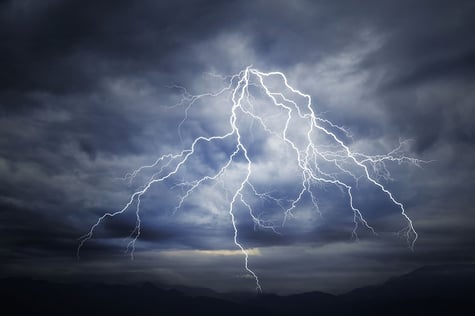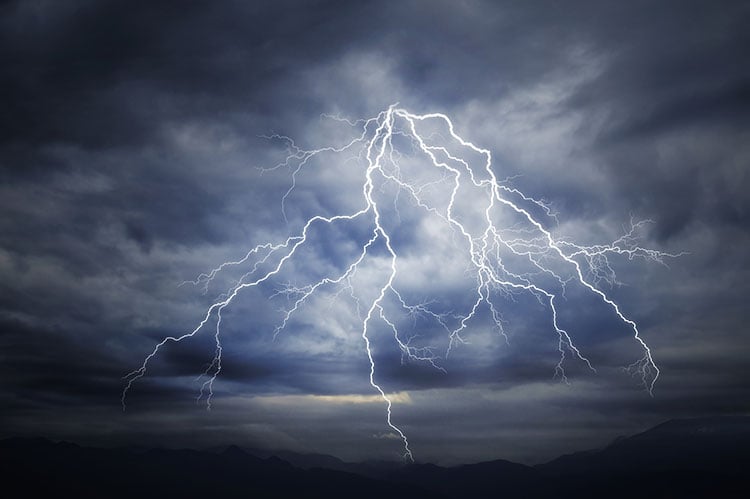 Rooftop equipment and pipe supports take a beating. They’re constantly pounded by everything from temperature fluctuations to wind, rain, snow, and UV damage. And, just like the postal service, they have to come through in all kinds of weather. Most of the time, it’s your standard stuff. But, if your building is in an area prone to extreme weather events like hurricanes, tornadoes, and blizzards, it may take more than the basics to protect your building and its occupants.
Rooftop equipment and pipe supports take a beating. They’re constantly pounded by everything from temperature fluctuations to wind, rain, snow, and UV damage. And, just like the postal service, they have to come through in all kinds of weather. Most of the time, it’s your standard stuff. But, if your building is in an area prone to extreme weather events like hurricanes, tornadoes, and blizzards, it may take more than the basics to protect your building and its occupants.
Here’s what you need to know to handle extreme weather:
1. Stay Away From Makeshift Supports
Makeshift pipe supports are never a good idea, but, during an extreme weather event, they can be deadly. There’s no way an overturned bucket doubling as a pipe support can withstand hurricane-force winds, for example. But even “secured” makeshift supports bring a high risk of failure. Unprotected plastic – plastic not designed to be used as an outdoor pipe support – can become brittle and break under pressure from strong winds.
Wood may seem a little safer, but wood rots. And even the strongest bolts can rip right through weakened, rotted wood. So your bolts may still be there after a storm, but the wood support they were attached to will be long gone, and the piping that the wood supported will be lying on your damaged roof. Makeshift metal supports present a similar problem: Exposure to the elements causes them to rust, and rust weakens their wind-resistance. And a stack of bricks? They’re no match for the kind of tornadic winds that send cars flying through the air and rip houses from their foundations.
2. Check Local Codes
Regions prone to extreme weather often have strict codes that are specifically intended to prevent storm damage. Several Gulf Coast states, for example, tightened building codes after Hurricane Katrina tore through the area in 2005. Many of them require all roofing systems to be designed by a professional engineer (PE) who can accurately calculate maximum anticipated wind velocity (taking into account factors like building height and gust potential) and design a system that can either withstand that wind or effectively transfer it to the building structure.
3. Consider the Extra Weight
Rooftop supports in a region prone to extreme weather are sometimes strengthened with ballast – concrete, steel, or another material that provides additional weight and support. And, while they’re not as heavy as ballast, anchoring systems like cables and other tie-downs still add some weight. All of that has to be taken into account when calculating the roof’s load capacity.
4. Don’t Blame it All on Wind
Tornadoes and hurricanes aren’t the only extreme weather events that can damage your roofing system and pipe supports. In some parts of the country, for example, constant heat and UV exposure, which can also significantly damage supports and their components. Other regions have to plan around excessive rain and snow. That’s why it’s so important to consider all relevant factors when choosing your supports.
Buildings in high-risk areas can’t make do with makeshift supports like wooden sawhorses or stacks of brick, or even the basic supports you can order straight from a catalog. You need professionally engineered pipe supports designed specifically for your building and the environment it’s in. In addition, those supports need to be made from top-notch materials with a proven track record for weather resistance.
Plastic components should be made from polypropylene that’s been treated to withstand UV radiation. Metal components should be made of hot-dipped galvanized steel designed to resist corrosion and maintain its strength despite the effects of weather. While no roof system is 100% stormproof, making an investment in customized, professionally engineered rooftop equipment and pipe supports are your best protection against potentially catastrophic damage.





